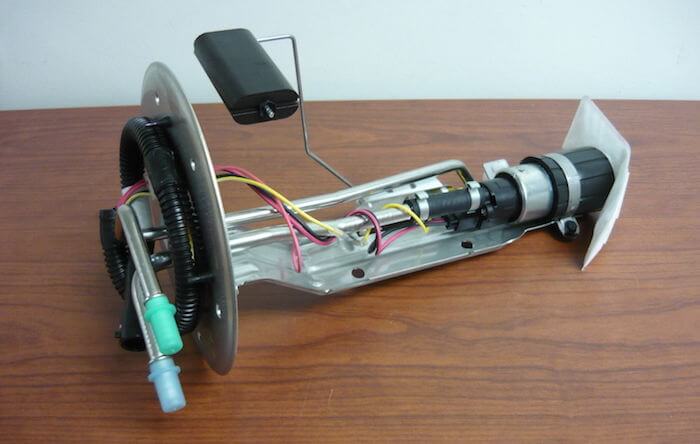
P2634 Fuel Pump B Control Circuit High
Content
- P2634 Fuel Pump B Control Circuit High
- OBD-II DTC Datasheet
- What does this mean?
- What is the severity of this DTC?
- What are some of the symptoms of the code?
- What are some of the common causes for the code?
- What are some steps to troubleshoot the P2634?
- Related DTC discussions
- Need more help with the P2634 code?
P2634 Fuel Pump B Control Circuit High
OBD-II DTC Datasheet
Fuel Pump B Control Circuit High
What does this mean?
This is a Generic Powertrain Diagnostic Trouble Code (DTC) applicable to many OBD-II vehicles (1996 and newer). This may include, but is not limited to, Ford, Dodge, Toyota, Chrysler, Jeep, Ram, Chevrolet, Nissan, Mitsubishi, Mercedes, etc. Despite the general nature, the exact repair steps may vary depending on the year of manufacture. brands, models and transmissions. configuration.
If code P2634 appears, there is a problem in the "B" fuel pump control circuit. In particular, this means that a higher voltage than usual was detected. This is usually caused by damaged wires / connectors inside the circuit or CAN bus. The powertrain control module (PCM) or engine control module (ECM) usually identifies this code, however other accessory modules can also call this particular code, for example:
- Alternative fuel control module
- Fuel injection control module
- Turbocharger control module
Depending on the make and model of the vehicle, it may take several driving cycles before it can activate this code, or it may be an immediate response as soon as the ECM recognizes a malfunction.
The fuel pump is an integral part of the vehicle's overall handling. After all, without a fuel pump, there would be no fuel supply to the engine. The control circuit, generally speaking, is responsible for turning the pump on and off depending on the needs of the operator. An open in the indicated circuit can also activate the P2634 code, so keep this in mind before proceeding with any kind of diagnosis.
Typical fuel pump: 
Relevant fuel pump B control circuit codes include:
- P2632 Fuel pump control circuit "B" / open
- P2633 Low rate of the fuel pump control circuit "B"
- P2634 Fuel Pump "B" Control Circuit High
What is the severity of this DTC?
This particular DTC is a moderately serious problem for your vehicle. You can still use your vehicle despite the problem. However, it is strongly advised to avoid this because you can risk intermittent fuel delivery to the engine, and an unstable or fluctuating fuel mixture can definitely cause serious engine damage.
What are some of the symptoms of the code?
Symptoms of a P2634 trouble code may include:
- Check engine light is on.
- Engine won't start
- Ignition misfire / engine stall
- Engine starts but dies
- Reduced fuel economy
- Engine turns normally but will not start
- Engine stalls when operating temperature is reached
Note. The issue may not really be resolved even if the check engine light does not come on immediately. Always make sure your vehicle goes through multiple driving cycles. those. drive for a week, if the CEL (Check Engine Light) does not come on completely, the problem is most likely solved.
What are some of the common causes for the code?
Reasons for this code may include:
- Problems with the fuel pump itself
- Broken or damaged ground wire in the control module of the device.
- Loose ground jumper on control module
- Open, short or corroded wiring in the CAN bus
- Faulty CAN bus
- Loose harnesses and wires causing abrasion or open circuit
- High circuit resistance (e.g. melted / corroded connectors, internal corrosion of wires)
What are some steps to troubleshoot the P2634?
The first thing I recommend that you do is review the vehicle-specific Technical Service Bulletins (TSBs) by year, model, and powertrain. In some cases, this can save you a lot of time in the long run by pointing you in the right direction.
Basic step 1
You should always immediately scan and test each module with an OBD-II scanner to get a good idea of the general electrical condition of your vehicle and its modules. You should also always do a visual inspection of the connectors and wiring if there is anything clearly damaged in which case it should be repaired or replaced. They are often located under the vehicle next to the fuel tank. They are susceptible to road debris and elements, so pay close attention to their health.
Basic step 2
When working on any component with its own module (such as a fuel pump module, etc.), check the ground circuits. This can be done by using a separate battery ground. This is sometimes easy to do with an auxiliary ground cable. If your problem is resolved with an auxiliary ground connected, but then returns when an OEM ground is used, this would indicate that your ground cable is causing the problem and needs to be repaired or replaced. Always carefully check the ground connection for corrosion. terminals, contacts, etc., which can cause resistance in the circuit. A good sign of excessive corrosion is a green ring around the connector attached to the positive battery post. If present, remove the terminal and clean all contact points, connector surface and terminal block / stud.
Basic step 3
Given that an open circuit could be the cause of the P2634 code, you should identify the circuit using the circuit diagram in your service manual. Once identified, you can trace the individual fuel pump control wire A separately to see if there are any obvious breaks in the wire. Repair as needed by soldering the wire (which I recommend) or using heat shrink butt connectors to isolate it from the elements. Using a multimeter, you can measure the resistance between the connectors in a circuit to pinpoint the location of the short / open circuit. It is highly recommended to use a power probe tool here if there is a fault somewhere within the entire circuit.
I hope this article has helped point you in the right direction for diagnosing a fuel pump control circuit DTC problem. This article is for informational purposes only and specific technical data and service bulletins for your vehicle should always take priority.
Related DTC discussions
- There are currently no related topics in our forums. Post a new topic on the forum now.
Need more help with the P2634 code?
If you still need help with DTC P2634, post a question in the comments below this article.
NOTE. This information is provided for informational purposes only. It is not intended to be used as a repair recommendation and we are not responsible for any action you take on any vehicle. All information on this site is protected by copyright.
